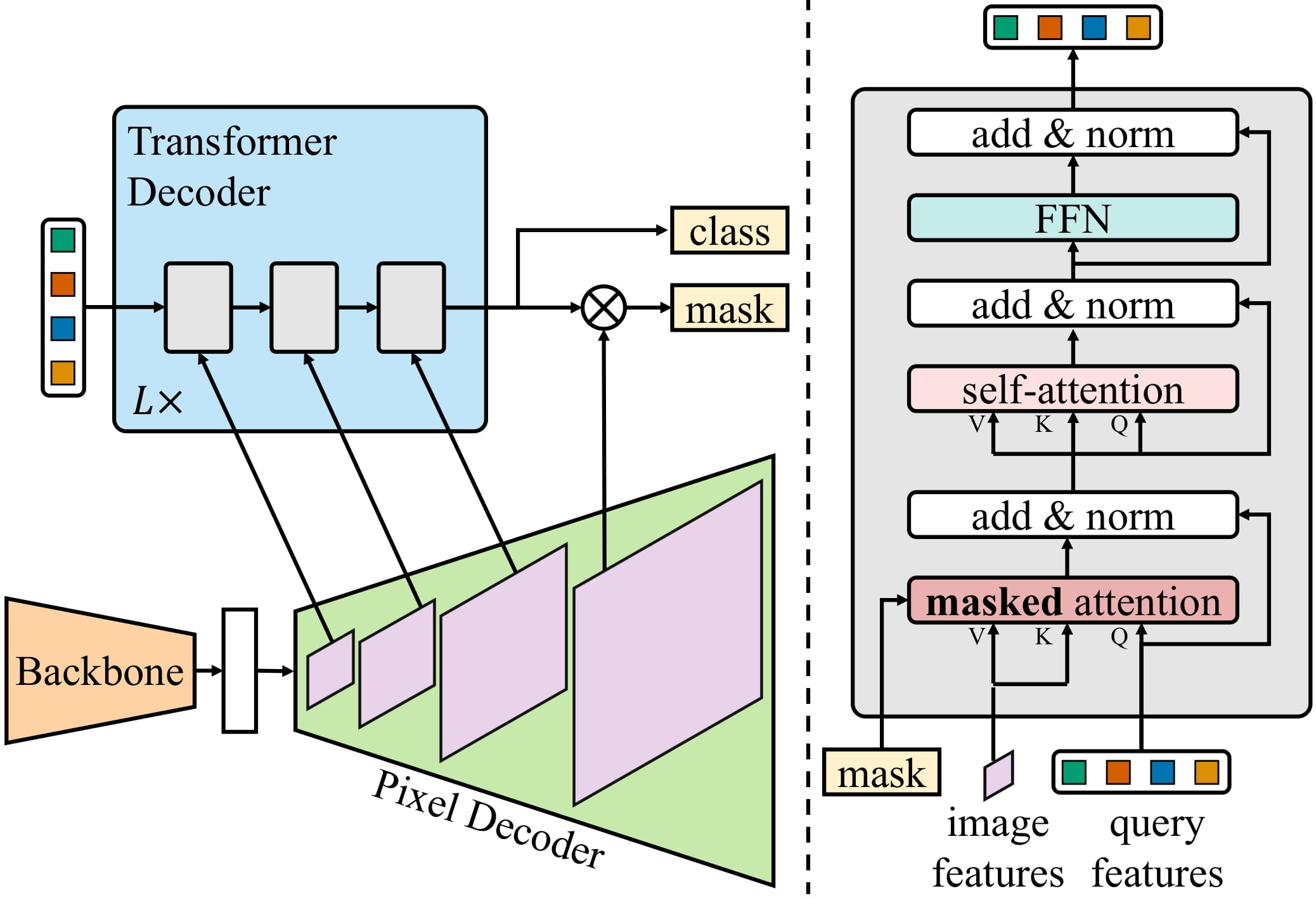* Rename index.mdx to index.md * With saved modifs * Address review comment * Treat all files * .mdx -> .md * Remove special char * Update utils/tests_fetcher.py Co-authored-by: Lysandre Debut <lysandre.debut@reseau.eseo.fr> --------- Co-authored-by: Lysandre Debut <lysandre.debut@reseau.eseo.fr>
4.5 KiB
Mask2Former
Overview
The Mask2Former model was proposed in Masked-attention Mask Transformer for Universal Image Segmentation by Bowen Cheng, Ishan Misra, Alexander G. Schwing, Alexander Kirillov, Rohit Girdhar. Mask2Former is a unified framework for panoptic, instance and semantic segmentation and features significant performance and efficiency improvements over MaskFormer.
The abstract from the paper is the following:
Image segmentation groups pixels with different semantics, e.g., category or instance membership. Each choice of semantics defines a task. While only the semantics of each task differ, current research focuses on designing specialized architectures for each task. We present Masked-attention Mask Transformer (Mask2Former), a new architecture capable of addressing any image segmentation task (panoptic, instance or semantic). Its key components include masked attention, which extracts localized features by constraining cross-attention within predicted mask regions. In addition to reducing the research effort by at least three times, it outperforms the best specialized architectures by a significant margin on four popular datasets. Most notably, Mask2Former sets a new state-of-the-art for panoptic segmentation (57.8 PQ on COCO), instance segmentation (50.1 AP on COCO) and semantic segmentation (57.7 mIoU on ADE20K).
Tips:
- Mask2Former uses the same preprocessing and postprocessing steps as MaskFormer. Use [
Mask2FormerImageProcessor] or [AutoImageProcessor] to prepare images and optional targets for the model. - To get the final segmentation, depending on the task, you can call [
~Mask2FormerImageProcessor.post_process_semantic_segmentation] or [~Mask2FormerImageProcessor.post_process_instance_segmentation] or [~Mask2FormerImageProcessor.post_process_panoptic_segmentation]. All three tasks can be solved using [Mask2FormerForUniversalSegmentation] output, panoptic segmentation accepts an optionallabel_ids_to_fuseargument to fuse instances of the target object/s (e.g. sky) together.

Mask2Former architecture. Taken from the original paper.
This model was contributed by Shivalika Singh and Alara Dirik. The original code can be found here.
Resources
A list of official Hugging Face and community (indicated by 🌎) resources to help you get started with Mask2Former.
- Demo notebooks regarding inference + fine-tuning Mask2Former on custom data can be found here.
If you're interested in submitting a resource to be included here, please feel free to open a Pull Request and we will review it. The resource should ideally demonstrate something new instead of duplicating an existing resource.
MaskFormer specific outputs
autodoc models.mask2former.modeling_mask2former.Mask2FormerModelOutput
autodoc models.mask2former.modeling_mask2former.Mask2FormerForUniversalSegmentationOutput
Mask2FormerConfig
autodoc Mask2FormerConfig
Mask2FormerModel
autodoc Mask2FormerModel - forward
Mask2FormerForUniversalSegmentation
autodoc Mask2FormerForUniversalSegmentation - forward
Mask2FormerImageProcessor
autodoc Mask2FormerImageProcessor - preprocess - encode_inputs - post_process_semantic_segmentation - post_process_instance_segmentation - post_process_panoptic_segmentation